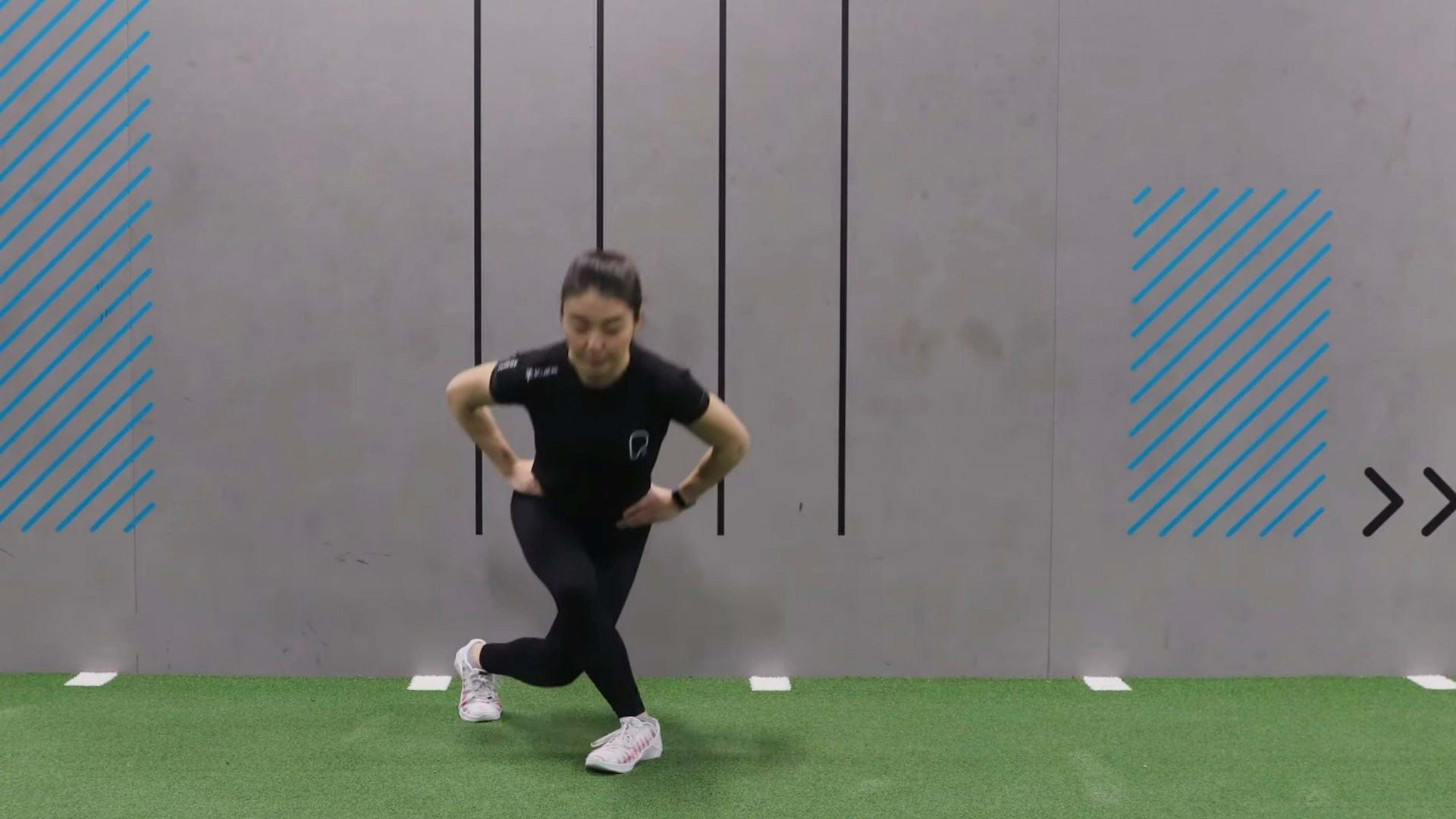Curtsy Lunges
What Is A Curtsy Lunge?

The curtsy lunge is a variation of the reverse lunge where the back leg crossed behind the stationary leg instead of being stepped directly back. This targets the glutes, particularly the gluteus medius, and the adductors, much more than other lunges, while still working the quads, hamstrings, calves, and core.
Performing curtsy lunges helps to build overall lower body strength and mass while improving balance, stability, and coordination. Challenging the leg muscles in different directions helps to build a more balanced and robust lower half, meaning less risk of injury.
All lunges are unilateral exercises, which means they work each side individually. This is a great way to reduce strength imbalances between the two sides.
Curtsy lunges can be carried out with heavy weights to improve strength and size, or with lighter weights but at a fast pace to increase the heart rate as part of a cardio workout.
Check out our other lunge variations: forward lunges, lateral lunges, walking lunges, sprinter lunges, reverse lunges.
Commonly Asked Questions On Curtsy Lunges
Curtsy lunges are a compound lower body exercise, working the quads, hamstrings, calves, adductors, and glutes. The core also must work to keep the torso stable.
Curtsy lunges are not inherently bad for knees and can actually help to strengthen the muscles that support the knees. Some people may find curtsy lunges cause discomfort in their hips or knees due to their individual anatomy. If this is the case, we’d suggest swapping curtsy lunges for another lunge variation like the reverse lunge.
Curtsy lunges can be an effective exercise for building lower body strength and stability and are particularly effective at working the glutes.
Curtsy lunges and lunges are both great functional unilateral exercises. Curtsy lunges are more effective at working the glutes and adductors, while regular lunges put more focus on the quadriceps. It can be more challenging to do curtsy lunges with heavier weights because of balance issues, making lunges likely more effective for strength and hypertrophy. Choose the variation depending on your goals or include both in your workouts.
Curtsy Lunge Tips
Good form will help to ensure the correct muscles are targeted in a curtsy lunge, and will help to keep balanced. Avoid leaning forward or backwards – your torso should be upright, shoulders relaxed, and spine neutral.
How To Do Curtsy Lunges
Stand tall with hands on your hips and imagine you are standing on an imaginary clock face.
Brace your core and lunge one leg forward to midnight, then spring yourself back up to standing position.
Repeat step 2 lunging the same leg to 2 o'clock, 3 o'clock (side or lateral lunge), 4 o'clock and 6 o'clock (reverse lunge). That is one rep.
Repeat with the other leg.
If you’re not sure if any of the above exercises are suitable for you, please consult your doctor before you start it. Need guidance on how to perform the exercise? Ask a personal trainer at your gym.